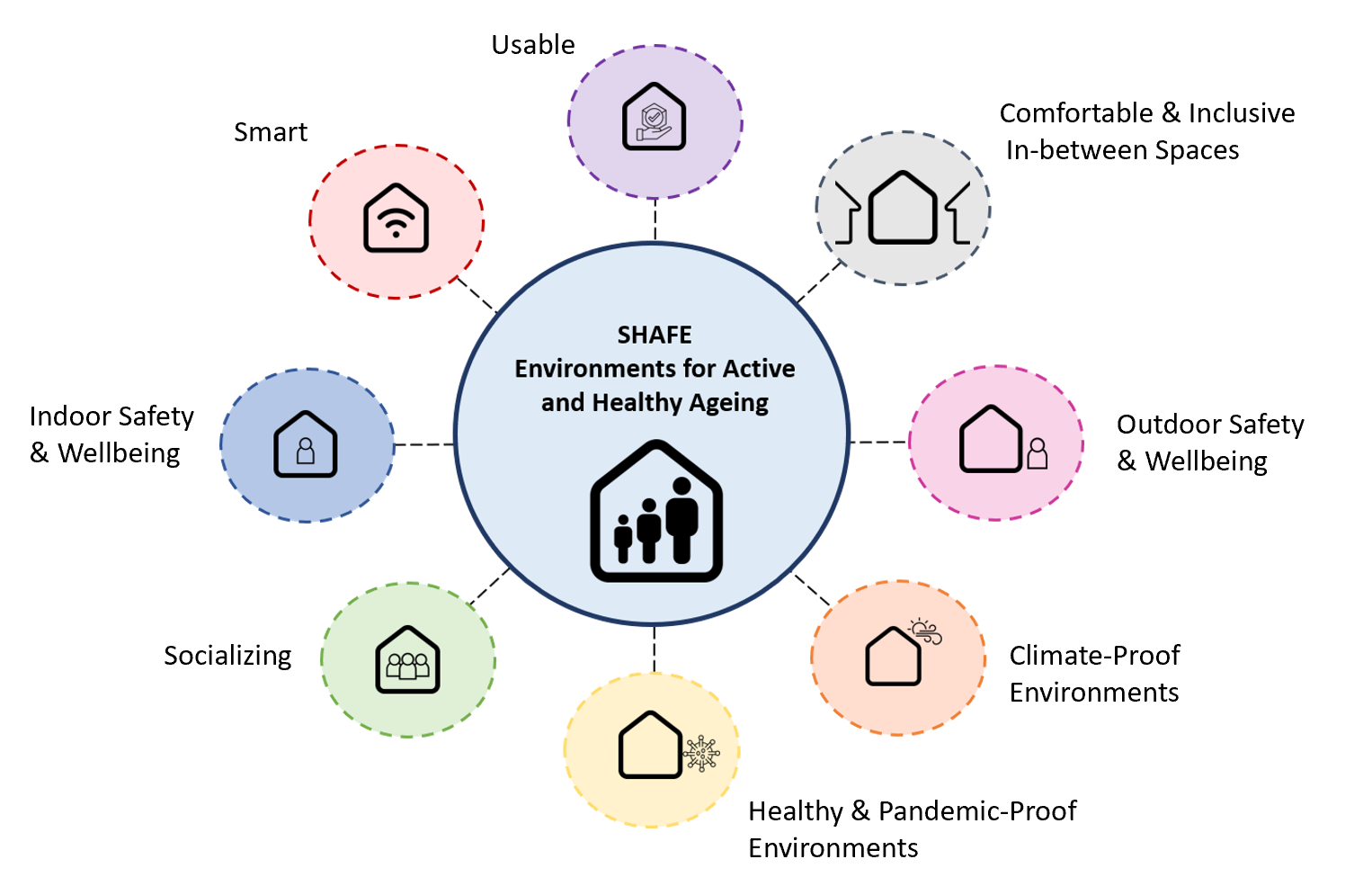
Paper presented by Mariangela Perillo, PhD Student in Architectural Technology and Environmental Design, University of Naples Federico II, at the 4th International Conference on Environmental Design ICED 2023 in Athens.
The paper aims to review existing studies on environmental design to enhance the SHAFE approach in architecture, promoting living spaces truly responsive to the people’s changing needs in a long-life perspective. Nowadays, this topic is particularly crucial since the World Health Organization with global strategies and policies highlights the imperative of age-friendly environments to facilitate active and healthy ageing, considering that the people over 60 is set to double by 2050.The home modification process and the smart technologies are supportive measures for independent living among older adults, as the recent pandemic has shown in terms of the lack of suitable housing for the elderly. The construction sector explores the role of Information and Communication Technologies (ICT) through case studies, aiming to manage physical and virtual spaces for innovative housing models. The SHAFE approach (Smart, Healthy, Age-Friendly Environments) addresses this challenge, focusing on promoting smart and inclusive solutions and optimizing social and physical environments with digital tools. However, there is a lack of studies on integrating SHAFE principles into architectural design, although the NET4Age-Friendly, the most recent application of SHAFE, aims to implement SHAFE practices as an interdisciplinary network. Based on a literature review the paper reports that smart technologies and devices designed for the elderly, also known as "gerontechnology," integrate gerontology and technology to create health-focused living spaces. A complete smart home system comprises external devices, a control system, a communication system, and a database. Sensors, categorized as wearable, applied directly in the environment, and infrastructure-mediated, play an essential role in monitoring and customizing living spaces based on individual lifestyles and housing structures. However, the integration of smart technologies with architectural design, especially in retrofitting scenarios, is an underexplored area, with existing studies often conducted in ideal environments. In conclusion, the paper emphasizes the urgency of age-friendly environments, the role of SHAFE in addressing this challenge, and the need for further research on integrating smart technologies into architectural design, particularly in retrofitting scenarios. The overarching goal is to create living spaces that effectively cater to the different and evolving needs of individuals as they age.
Erminia Attaianese, Department of Architecture, University of Naples Federico II Professor of Architectural Technology, Applied Ergonomics and User-Centered Design Coordinator of the Applied and Experimental Ergonomics Laboratory
Mariangela Perillo, Department of Architecture, University of Naples Federico II Architect, PhD Student in Architectural Technology and Environmental Design